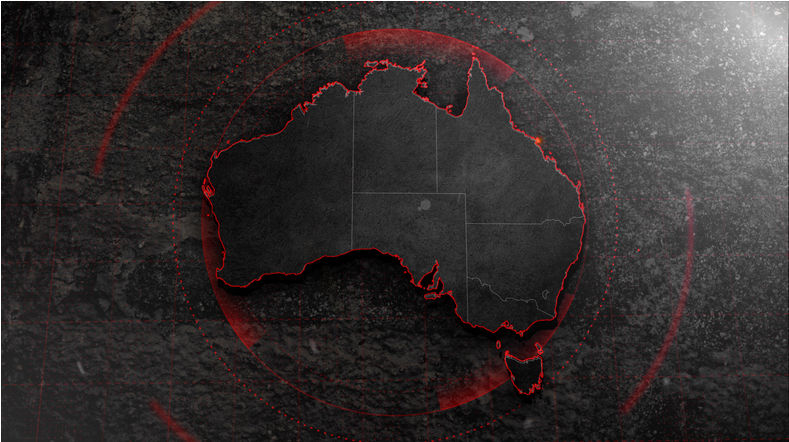America’s war machine: Unless Australia acquires nuclear weapons, why acquire AUKUS subs?
August 3, 2024
Nuclear-powered Virginia Class and AUKUS submarines are a useful deterrent only if they carry cruise missiles with nuclear warheads that can be launched from their unique vertical firing shaft.
Then if a distant enemy nuked Australia, we could launch an instant nuclear retaliation from such submarines lurking off their coast for months without needing refuelling.
That’s called MAD - mutually assured destruction - both sides know that neither side could nuke the other without risking oblivion.
Australia does not have nuclear weapons, nor does it plan to acquire them.
Australia’s quest to become part of America’s armed forces
Australia is fusing its navy, air force and army with America’s military forces. It’s called shifting from “interoperability” to “interchangeability”. One senior Australian defence officer has explained it as follows:
“…interoperability is two organisations able to work together, share information through technology and systems, and operate effectively as a joint or combined team. The higher standard of interchangeability includes all that plus the ability to seamlessly exchange individual people, equipment, doctrine, and/or systems between trusted nation groups.”
In essence under “interoperability” there are two separate national chains of command working jointly, whereas under “interchangeability” there is single chain of command. Under the latter it is doubtful the junior partner could break the chain of command and insist it call its own shots if the senior partner got into a skirmish not of Australia’s doing.
Without nuclear arms Australia should not be a party to confronting China
As such the Australian mainland could be the first casualty in an American war with China because we would be the weak link in America’s war machine without our own nuclear weapons.
Australian owned Virginia Class and AUKUS submarines carrying cruise missiles with conventional war heads would not provide a meaningful MAD deterrence.
And we have no guarantee from America that if a foreign power nuked Australia, America would nuke it in turn since that could cause a nuclear attack on America itself.
Worse still, unlike America we do not have an air defence system to intercept missile and drone attacks on our capital cities nor will we have such a protective shield in the foreseeable future.
Australia’s choice – get nuclear armed or stay conventionally armed?
In February 1970, Australia signed the Treaty on the Non-Proliferation of Nuclear Weapons (NPT), which commits us not to acquire nuclear weapons and to champion non-proliferation gobally. Since then, we have been one of the treaty’s strongest supporters.
Given that very long-range submarines like Virginia Class and AUKUS are best suited for nuclear armed powers (US, UK France, Russia, China, India, Pakistan, Israel, and North Korea), Australia needs to make a choice:
- Break the NPT and the join the club of nine nuclear armed nations and risk provoking our biggest neighbour Indonesia to do likewise, or
- Scrap nuclear-powered submarines for conventional ones better suited for defending our coastline than patrolling China’s foreshores
Canada recently decided to buy 12 modern electric-diesel powered submarines for an estimated US$44 billion (versus US$ 268-$368 billion for Australia’s 8 Virginia Class and AUKUS nuclear-powered submarines) since its focus is on patrolling its own vast coastline not that of distant nations.
Marles’ rationale for nuclear-powered subs does not stack up
Australia’s official rationale for obtaining submarines that can stay under water almost indefinitely is that they will defend our world shipping lanes and undersea communication cables. But that’s not credible.
Each year there are 26,000 ship port calls involving over 3,000 different ships at 70 Australian ports according to Shipping Australia.
China is Australia’s largest two-way trading partner in goods and services, accounting for one third of our trade with the world. It is not in China’s interests to disrupt it.
Marles should explain how three nuclear submarines by 2039 or eight by 2055 can defend each of these ships doing 26,000 round trips from being sunk by enemy submarines, destroyers, or bombers. Note that only one sub in three will be at sea at any time with the other two in port for maintenance or training purposes.
Marles probably thinks that our subs would be assisted by America’s 67 nuclear submarines (China has only 12 but is planning to have 21 by the early 2030s). But what assurance does he have that America would prioritise Australia’s trade routes and shipping movements over its own?
As for the nearly one million miles of telecommunication cables lying on the ocean floor, submarines can’t protect them. To safeguard these optical fibres, they are covered in silicone gel and wrapped in multiple layers of plastic, steel wires, copper sheathing, polyethylene insulator, and nylon yarn. In the deep sea, ocean inaccessibility largely protects cables, requiring only a thin polyethylene sheath. Hence the navy won’t have a role in patrolling their security.

